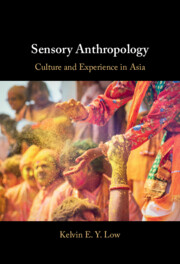Conclusion: Thinking through the Senses
Published online by Cambridge University Press: 02 March 2023
Summary
The senses provide important everyday and symbolic media through which social order is routinely looked at. Throughout these multifold processes and in relation to exchange and imitation, we are able to discern a number of important issues that arise in the agenda to compose a sensory anthropology of Asia. First, senses serve as vehicles of knowledge across the whole array of everyday social domains in terms of how they organise human–nonhuman experience. Second, comparative approaches initiated herein are not only a response to either Western- or Asian-centric sensory analysis. They further advance the scope of sensory scholarship by prompting inter- and intra-cultural dialogue on the subject. Third, sensory transnationalism illustrates how sensory orders and practices work, and where established sensory norms are responded to by social actors adhering to different sensory scripts in cross-cultural exchanges. The broader intention is to spotlight how sensory cultures, sentient practices and encounters transpire as a way of comprehending Asia through sense perception as a newer perspective in social and cultural anthropology. In doing so, I inquire further both into the breadth and depth of how to articulate the social lives and textures of the senses toward crafting the future of sensory anthropology.
- Type
- Chapter
- Information
- Sensory AnthropologyCulture and Experience in Asia, pp. 161 - 165Publisher: Cambridge University PressPrint publication year: 2023



